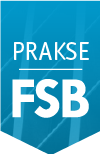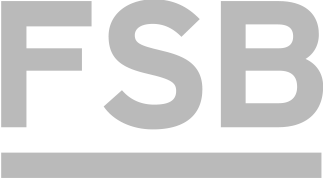International Exchange
Course details
Student Mobility > Programmes and Courses > Courses in English > Course detailsVibration Theory
- Teaching: Completely taught in English
- ECTS: 4
- Level: Graduate
- Semester: Winter
- Prerequisites:
- Mechanics I Mechanics II Strength of materials
- Load:
Lectures Exercises Laboratory exercises Project laboratory Physical education excercises Field exercises Seminar Design exercises Practicum 30 0 15 0 0 0 0 0 - Course objectives:
- The objective of the course is to develop the ability of students for solving discrete vibration models of real mechanical systems in the field of mechanical engineering.
- Student responsibilities:
- Grading and evaluation of student work over the course of instruction and at a final exam:
- 2 preliminary exams Oral exam in 2 parts
- Methods of monitoring quality that ensure acquisition of exit competences:
- student"s survey
- Upon successful completion of the course, students will be able to (learning outcomes):
- After successfully completed course, the student will be able to: - Integrate mathematics (particularly differential equations), Mechanics I, II, and Strength of materials in the analysis of vibrations of mechanical systems, - Calculate natural frequency of discrete and continuous vibration systems, - Calculate the amplitude of forced vibration of discrete and continuous vibration systems, - to decompose the specific effects of stiffness, inertia and damping - Solve problems, - Integrate advanced mathematics in the calculations of vibrational behavior of simple models of mechanical systems and interpret their vibrational behavior.
- Lectures
- 1. Kinematics of vibration
- 2. Fourier transform of periodic functions
- 3. Small amplitudes vibration. Linearization of the nonlinear vibration systems with single-degree-of-freedom.
- 4. Free vibration without damping
- 5. Free vibration with viscous damping
- 6. Forced vibration without damping: harmonic excitation
- 7. Forced vibration with viscous damping: harmonic excitation
- 8. Forced vibration due to harmonic support motion.
- 9. Single degree of freedom system. Excitation due to harmonic, impulsive and general force.
- 10. Single degree of freedom system. Support excitation. Vibration measurement. Vibration exciter, vibrograph and accelerograph.
- 11. Flexural beam vibration. Differential equation. Free and forced vibration. Boundary conditions. Orthogonality properties of natural modes.
- 12. Longitudinal and torsional beam vibration. Differential equation. Free and forced vibration. Harmonic forced vibration.
- 13. Vibration of plates and orthotropic panels. Analytical solution for rectangular and simple supported plates.
- 14. Application of the finite element method in vibration analysis. Matrix differential equation of beam, membrane, plate and shell finite element. Stiffness, mass, damping and excitation. Natural vibration: eigenvalue problem, natural frequencies and modes. Forced vibration. Mode superposition method.
- 15. Introduction to non-linear vibration. Single degree of freedom system. Softening and hardening stiffness. Non-linear phenomena: deviation of natural frequency, amplitude jumping, unsymmetry of response, multiharmonic response due to monoharmonic excitation, superharmonics and subharmonics, strange attractor, safety basin, fractal boundary, deterministic chaos.
- Exercises
- 1. Examples of harmonic motions. Different ways of notation and of graphical representation.
- 2. Example of representation of periodic function in term of Fourier series.
- 3. Linearization of non-linear single degree of freedom vibratory system.
- 4. Example of free vibration of spring-mass system.
- 5. Example of viscously damped free vibration.
- 6. Examples of forced harmonic vibration of spring-mass system.
- 7. Example of viscously damped single degree of freedom system with harmonic excitation.
- 8. Example of forced vibration of viscously damped single degree of freedom system excited by harmonic support motion.
- 9. Example of forced harmonic vibration of single degree of freedom system. Formulation and solution of differential equation of motion. Analysis of vibration amplitudes and phases of spring-mass and viscously damped systems.
- 10. Example of forced vibration of single degree of freedom system excited by rotating unbalance. Solution of differential equation of motion and analysis of vibration amplitudes and phases. Example of forced vibration of single degree of freedom system excited by harmonic support motion. Solution of differential equation of motion and analysis of vibration amplitudes for cases of absolute and relative motion.
- 11. Example of analytical solution of prismatic beam flexural vibration problem using Krylov"s functions. Properties of Krylov"s functions and their practical application. Examples of analyses of free and forced vibration for various boundary conditions.
- 12. Example of application of the finite element method for numerical solution of beam flexural vibration problem. Description and application of beam finite element. Analysis of free and forced vibration for various boundary conditions.
- 13. Examples of the analytical solution of beam torsional vibration problem. Analysis of free and forced vibration for various boundary conditions.
- 14. Examples of application of the finite element method for numerical solution of beam torsional vibration problem. Analysis of free and forced vibration. The comparative analysis of the finite element method and the analytical solution of free and forced beam torsional vibration problem.
- 15. Example of flexural vibration analysis of homogenous plate by energy method. Overview of computer programs for vibration analysis. Program OMEGA for free vibration analysis and program SLJ for forced vibration analysis.
- Compulsory literature:
- Stegić, M.: Teorija vibracija linearnih diskretnih mehaničkih sustava, Sveučilište u Zagrebu, Zagreb, 1996.W. T. Thomson: Theory of Vibration with Applications, George Allen & Unwin, 1981.
M. Cartmell: Introduction to Linear, Parametric and Nonlinear Vibration, Chapman and Hall, 1990.
A. Mihanović: Dinamika konstrukcija, Sveučilište u Splitu, 1995.
Wittenburg, J.: Schwingungslehre, Springer, Berlin, 1996.
Clearence W. de Silva: Vibration Fundamentals and Practice, CRC Press, London, 2000. - Recommended literature:






